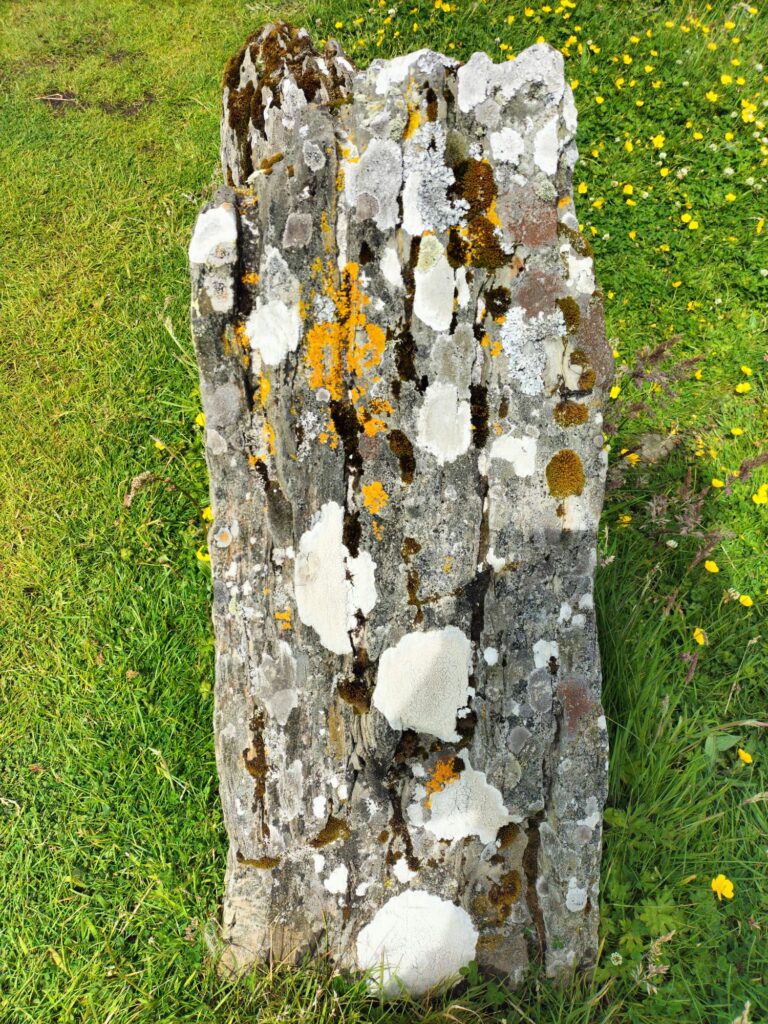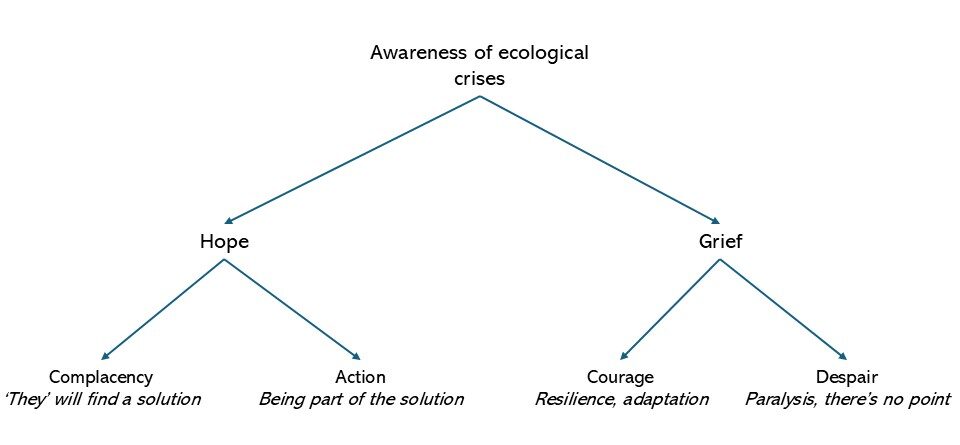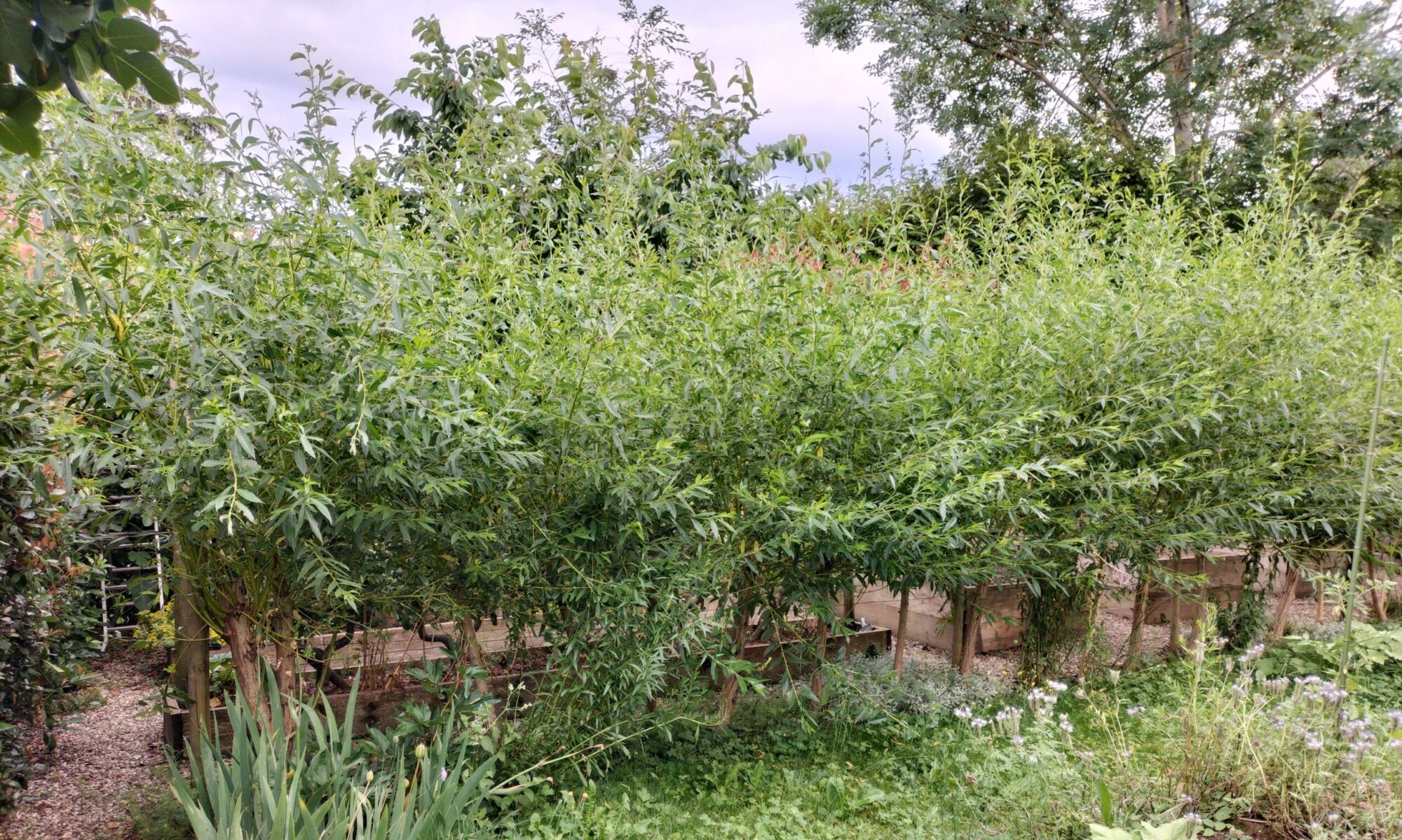
The moss and lichen living on this standing stone in the Ring of Brodgar on Orkney, are just stunning.
We are coming up to Creation Time in the liturgical calendar and want to motivate people to positive action for people and planet. There is a strong desire to offer hope, but what hope can we honestly offer and what is the meaning of Christian hope in these times anyway?
I came across the following quote from NASA scientist Kate Marvel, which I find very helpful:
The opposite of hope is not despair. It is grief… we need courage, not hope… Courage is the resolve to do well without the assurance of a happy ending.
Now I think that we do need hope, but I would like to carefully define the nature of this hope. I have come up with a little diagram to illustrate where I have got up to in my thinking. It is just a diagram, and inevitably oversimplifies, but I offer it in case you find it helpful:

The idea is that once a person becomes aware of the ecological crises facing us, they might respond in one of two ways – with hope, or with grief.
Hope can be a good thing in that it can motivate you to take action, to do whatever you can to prevent disaster in the belief that your actions (as part of a collective effort, of course) can make a difference, along with technological innovations, government action etc. (the hope/action pathway). However, hope can also be counterproductive, if we are too hopeful, we can slip into complacency, believing that ‘they’ will find a solution and that we can carry on our lives the same as usual (hope/complacency).
Grief can be counterproductive if it means that we end in despair, seeing the depth of the crises and believing that nothing can be done. In this case, there is no point engaging and the result is paralysis (grief/despair). However, grief can also be a route into something positive. If we face up to the likely negative scenarios and go through a process of grief and lament, we can come out the other side as changed people, reinvigorated in our commitment to caring for creation with the courage and determination to make significant changes (grief/courage).
Many of the subsequent actions of the grief/courage pathway will overlap with those at the end of the hope/action pathway, but the motivation will be somewhat different. For grief/courage, the aim is no longer to prevent disaster, but to do whatever we can to minimize the impact of what is to come, to adapt our lifestyles and become more resilient; this is where I find myself, although I am only just at the very beginning of working out the implications for me. There can even be hope at the end of the grief/courage pathway, my hopes are the following:
– That, as we face increasingly difficult conditions, we will be faithful to God’s values, and live in such a way as to bring light, truth, peace and joy into whatever situations we find ourselves in.
– That, even if it gets to the point that the planet is no longer habitable for humans, life will survive in refugia and repopulate the planet in new and amazing ways, as happened after the fall of the dinosaurs.
– That, whatever happens, God will be with us every step of the way, and we will all ultimately find our home in the heart of the Divine.
My Bible passage for this morning was Romans 15:13 May the God of hope fill you with all joy and peace in believing, so that you may abound in hope by the power of the Holy Spirit. This hope comes from a trust in God, not from a trust in what humans might do to dig ourselves out of our current hole. Our hope needs to be deeper than that. A hope coming from a trust that God is good, that he has the beginning and the end in his hands. It seems like the challenge is to hold together joy, peace and hope at the same time as facing and being with the grief, pain and suffering of all the inhabitants of this planet.
